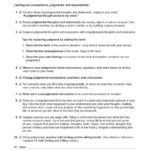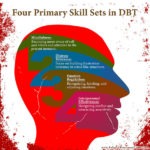Ideas for Practicing Nonjudgmentalness
Leaving out comparisons, judgments, and assumptions:
1. Practice observing judgmental thoughts and statements, saying in your mind,
“A judgmental thought arose in my mind.”
2. Count judgmental thoughts and statements (by moving objects or pieces of paper from
one pocket to another, by clicking a sports counter, or by marking a piece of paper).
3. Replace judgmental thoughts and statements with nonjudgmental thoughts and statements.
Tips for replacing judgment by stating the facts:
1. Describe the facts of the event or situation—only what is observed with your senses.
2. Describe the consequences of the event. Keep to the facts.
3. Describe your own feelings in response to the facts (remember, emotions are not
judgments).
4. Observe your judgmental facial expressions, postures, and voice tones (including
voice tones in your head).
5. Change judgmental expressions, postures, and voice tones.
6. Tell someone what you did today nonjudgmentally, or about an event that occurred. Stay
very concrete; only relate what you observed directly.
7. Write out a nonjudgmental description of an event that prompted an emotion.
8. Write out a nonjudgmental blow-by-blow account of a particularly important episode in your
day. Describe both what happened in your environment and what your thoughts, feelings,
and actions were. Leave out any analysis of why something happened, or why you thought,
felt, or acted as you did. Stick to the facts that you observed.
9. Imagine a person you are angry with. Bring to mind what the person has done that has
caused so much anger. Try to become that person, seeing life from that person’s point
of view. Imagine that person’s feelings, thoughts, fears, hopes, and wishes. Imagine that
person’s history and what has happened in his or her history. Imagine understanding that
person.
10. When judgmental, practice half-smiling and/or willing hands.









